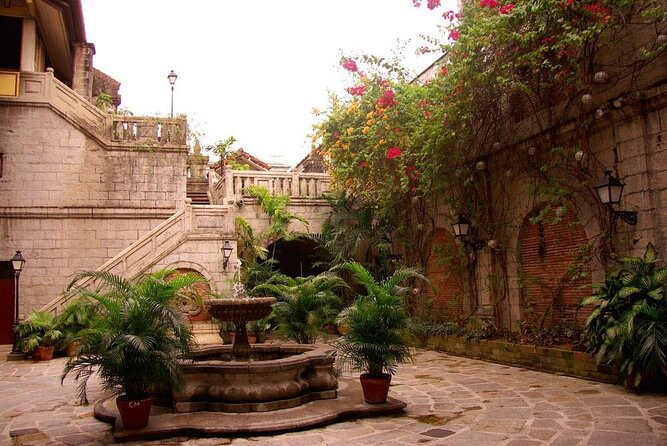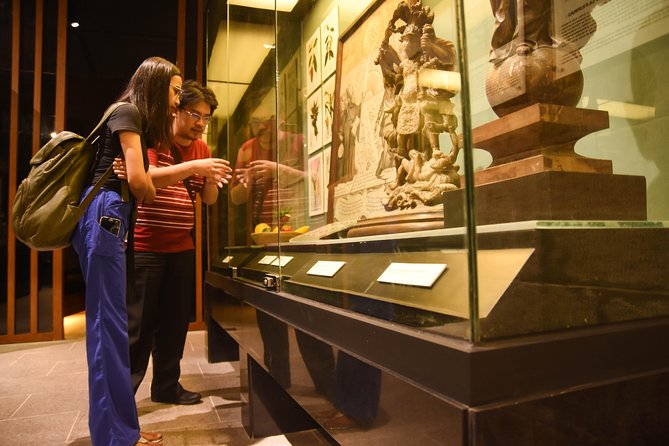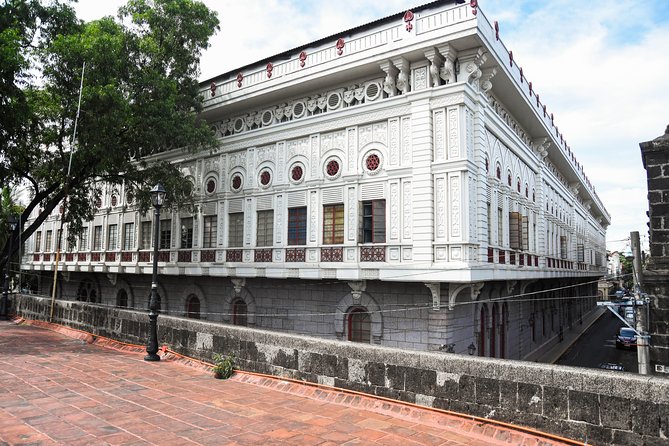Did you know that the Philippines is home to over 7,000 islands?
This archipelago holds a diverse and intricate history waiting to be explored.
From the ancient civilizations of the Pre-Colonial Period to the influences of Spanish, American, and Japanese occupations, each era has shaped the country’s identity.
Discover the stories of resilience, cultural fusion, and national pride that have defined the Philippines throughout the centuries.
Join in to uncover the untold tales and pivotal moments that have molded this vibrant nation into what it is today.
Good To Know

- Rich pre-colonial cultures with diverse traditions and social structures.
- Spanish influence through Christianity, language, and art integration.
- American era marked by modernization, democratic processes, and educational reforms.
- Endurance and resilience during Japanese occupation, fostering unity and guerilla warfare.
Here's more tours and experiences happening nearby.
Philippine Pre-Colonial Period

During the Philippine Pre-Colonial Period, indigenous communities thrived across the archipelago, cultivating rich cultures and intricate social structures. Philippine cultural practices were diverse and reflected the unique traditions of each indigenous tribe. These practices encompassed various aspects of daily life, including rituals, ceremonies, and traditional arts.
The interactions among indigenous tribesfolk were characterized by trade, alliances, and occasional conflicts over territory or resources. Despite these challenges, there was also a strong sense of communal cooperation and cultural exchange among different groups. This period marked a time of flourishing creativity and innovation in craftsmanship, agriculture, and social organization, laying the foundation for the rich tapestry of Philippine culture that continues to influence the country to this day.
Spanish Colonial Era
In the era of Spanish colonization in the Philippines, significant changes reshaped the cultural landscape and societal structures of the archipelago. The impactful changes during this period included:
- Introduction of Christianity and the construction of churches.
- Establishment of the encomienda system.
- Imposition of Spanish language and education.
- Influence on Philippine art and architecture.
- Integration of Filipino traditions with Spanish customs leading to cultural assimilation.
These alterations had a lasting impact on the Philippines, shaping its identity and traditions.
The Spanish Colonial Era marked a period of transformation and adaptation, blending indigenous practices with Spanish influences to create a unique cultural heritage that’s still evident today.
American Occupation

The American Occupation in Philippine history brought about significant changes that influenced the country’s political landscape and societal structures. American influence during this period introduced new governmental systems, including the hotel of democratic processes and educational reforms. These changes paved the way for modernization and urban development in the Philippines.
On top of that, the American occupation brought about cultural changes as Western ideals and practices began to blend with traditional Filipino customs, shaping a unique cultural identity. The introduction of English as a medium of instruction and the influence of American pop culture further contributed to the evolution of Philippine society.
Japanese Occupation
The impactful legacy left by the American Occupation set the stage for the tumultuous era of Japanese rule in Philippine history. The Japanese Occupation brought significant changes, including harsh living conditions under Japanese control, brutal suppression of dissent and resistance movements, economic exploitation and forced labor of Filipinos, development of guerilla warfare to resist Japanese forces, and endurance of Filipinos amidst adversity, showcasing resilience and unity.
Despite the challenges faced during this period, the Filipino spirit of resistance remained strong, paving the way for the eventual liberation of the Philippines. The Japanese Occupation left a lasting impact on the country, shaping its path towards independence and fostering a sense of national identity.
Post-War Reconstruction
After the devastation of World War II, Philippines embarked on a monumental journey of rebuilding and revitalizing its war-torn landscape. The post-war reconstruction efforts focused on two key pillars: economic development and cultural revival.
| Post-War Reconstruction | |
|---|---|
| Economic Development | Cultural Revival |
| – Implementation of economic policies to spur growth. | – Preservation and promotion of Filipino arts and traditions. |
| – Infrastructure development to support industries. | – Revitalization of historical sites and landmarks. |
| – Encouragement of foreign investments for progress. | – Promotion of local literature, music, and dance. |
| – Creation of job opportunities for war-affected citizens. | – Integration of cultural heritage into modern society. |
Contemporary Philippines
Embarking on a journey through the vibrant tapestry of Contemporary Philippines reveals a dynamic blend of tradition and modernity shaping the nation’s identity today. The Philippines showcases a rich tapestry of cultural diversity influenced by a range of modern influences.
-
Bustling cityscapes juxtaposed with serene natural landscapes
-
Fusion of Spanish colonial architecture with modern skyscrapers
-
Traditional Filipino cuisine intertwined with international flavors
-
Vibrant festivals celebrating indigenous customs and contemporary art
-
Youth embracing global trends while preserving local traditions.
Frequently Asked Questions
What Are Some Lesser-Known Historical Sites in Manila That Are Not Covered in the Tour?
While the tour covers famous sites, Manila holds hidden gems and forgotten landmarks with untold stories and secret treasures. Visitors can explore these off-the-beaten-path historical sites to uncover more about the city’s rich history.
How Has Philippine History Influenced the Country’s Current Political Landscape?
Philippine history significantly shapes its political dynamics and societal changes. From colonial struggles to independence movements, the country’s past influences its current landscape. Understanding this historical backdrop is crucial for comprehending the Philippines’ complex political environment.
Are There Any Local Traditions or Cultural Practices That Have Survived Throughout the Different Periods of Philippine History?
Local traditions and cultural practices in the Philippines have endured through indigenous influence and colonial legacies. These customs reflect a rich tapestry of beliefs and rituals that have been passed down from generation to generation, shaping Filipino identity.
How Do Filipinos View the Legacies of the Different Colonial Powers That Have Ruled the Country?
Filipinos hold diverse views on colonial legacies, with perspectives shaped by historical context and cultural perspectives. Acknowledging the impact of past rulers, they navigate a complex landscape where appreciation and critique coexist.
What Role Did Indigenous Groups Play in Shaping Philippine History, and How Has Their Influence Persisted Over Time?
Indigenous groups in the Philippines played a pivotal role in shaping history through their cultural resilience and contributions. Their influence persists, evident in traditions, arts, and societal structures, showcasing a rich tapestry of heritage that continues to thrive.
The Sum Up
Set out on a journey through the captivating history of the Philippines with our immersive crash course tour in Manila.
From the Pre-Colonial Period to the Contemporary Philippines, our expert guides will lead you through key historical sites, providing insights and stories that bring the past to life.
Don’t miss this opportunity to uncover the rich tapestry of Philippine history and gain a deeper understanding of this fascinating country.
Book your tour today and experience history like never before!
